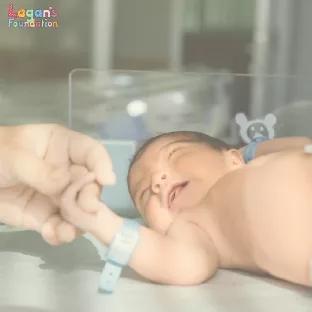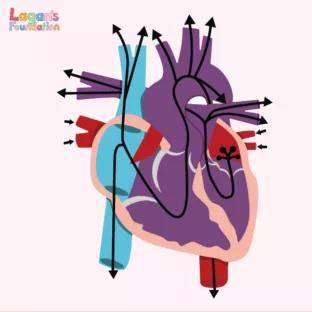Can Ventricular Septal Defects (VSD) be Treated?
It’s important that parents are aware of the types of modern treatments available for babies born with congenital heart defects - we’ll run through the options.
A Ventricular Septal Defect is a hole in the wall that separates the ventricles – it is actually the most common type of congenital heart condition. The larger the hole, the more symptoms it can cause and the more likely that a child will need surgery.
Although this can be scary to hear, it is important that parents are aware of the types of modern treatments available for babies born with congenital heart defects.

Key Points:
- Small Ventricular Septal Defects may not need to be treated and will usually close on their own.
- Medium to large Ventricular Septal Defects will usually require treatment through surgery and medication.
- If a large Ventricular Septal Defect is left untreated, it can cause other serious heart conditions.
Are there long-term consequences of Ventricular Septal Defects?
While some smaller Ventricular Septal Defects (VSD) may never cause any issues, some larger ones do have the potential to cause complications if they are not treated correctly.
Some long-term consequences could include:
- Heart failure – In patients who have a medium or large Ventricular Septal Defect, their heart will often have to work harder which results in the lungs having too much blood pumped to them. If not treated, this can result in long term heart defects and even heart failure.
- Eisenmenger syndrome – An unrepaired hole can lead to complications after many years, such as irregular blood flow which causes the blood vessels to become stiff and narrow. This syndrome will permanently damage the blood vessels in the lungs.
- Endocarditis – This is a rare condition with Ventricular Septal Defects in which an infection causes life-threatening inflammation of the inner lining of the heart’s chambers and valves.
- Arrhythmia – This is an irregular heartbeat, in which the heart beats too slowly, too quickly or with an irregular rhythm.
Can Ventricular Septal Defects be cured?
Yes, in most cases, surgery will be required to ‘cure’ a Ventricular Septal Defect. Curing a Ventricular Septal Defect essentially means that the hole is closed through open-heart surgery.
The surgery works by the surgeon finding the hole between the ventricles and using patch materials or stitches to close the hole. The type of Ventricular Septal Defect that needs surgery will also require a heart-lung machine to act as the heart.
How are Ventricular Septal Defects treated in children?
Depending on the size of the hole, Ventricular Septal Defects can be treated through regular health checkups and medications.
While medications won’t repair a Ventricular Septal Defect, there are specific types that will help to reduce symptoms. Water pills are a common medication that are used to decrease the amount of fluid in the body and reduce strain on the heart.
Surgeries to repair a Ventricular Septal Defect include open-heart surgery, as we have previously discussed, as well as catheter procedures. The catheter is inserted into a blood vessel and is guided to the heart. A small device is inserted through the catheter to close the hole.
At what age should a Ventricular Septal Defect be repaired?
Generally speaking, it is advised that Ventricular Septal Defects should be repaired before a child reaches the age of 2 years old. Without repair before the age of 2, the heart can become seriously damaged and will likely become worse over time.
Children who have small Ventricular Septal Defects, usually around the size of 3mm or less, usually won’t need to worry about surgery since the hole will likely close by itself by the time the child is 6 years old.
Can a Ventricular Septal Defect be left untreated?
If left untreated, a Ventricular Septal Defect can cause a number of different issues, some of which can be life threatening.
A large, untreated Ventricular Septal Defect can cause pulmonary hypertension, which is when there is abnormally high blood pressure in the lungs. It is a serious condition that may lead to heart failure in the right ventricle.
Very rarely, untreated Ventricular Septal Defects can lead to an infection in the heart called bacterial endocarditis. This occurs when bacteria enters the bloodstream and becomes trapped in the heart, causing infection.
Your child’s doctor should assess whether surgery is needed, and help you to make the best decision for the child in terms of treatment.

![Understanding Total Anomalous Pulmonary Venous Return [TAPVR]](/wp-content/uploads/2025/04/Understanding-Total-Anomalous-Pulmonary-Venous-Return-FI-312x312-c-default.jpg)


